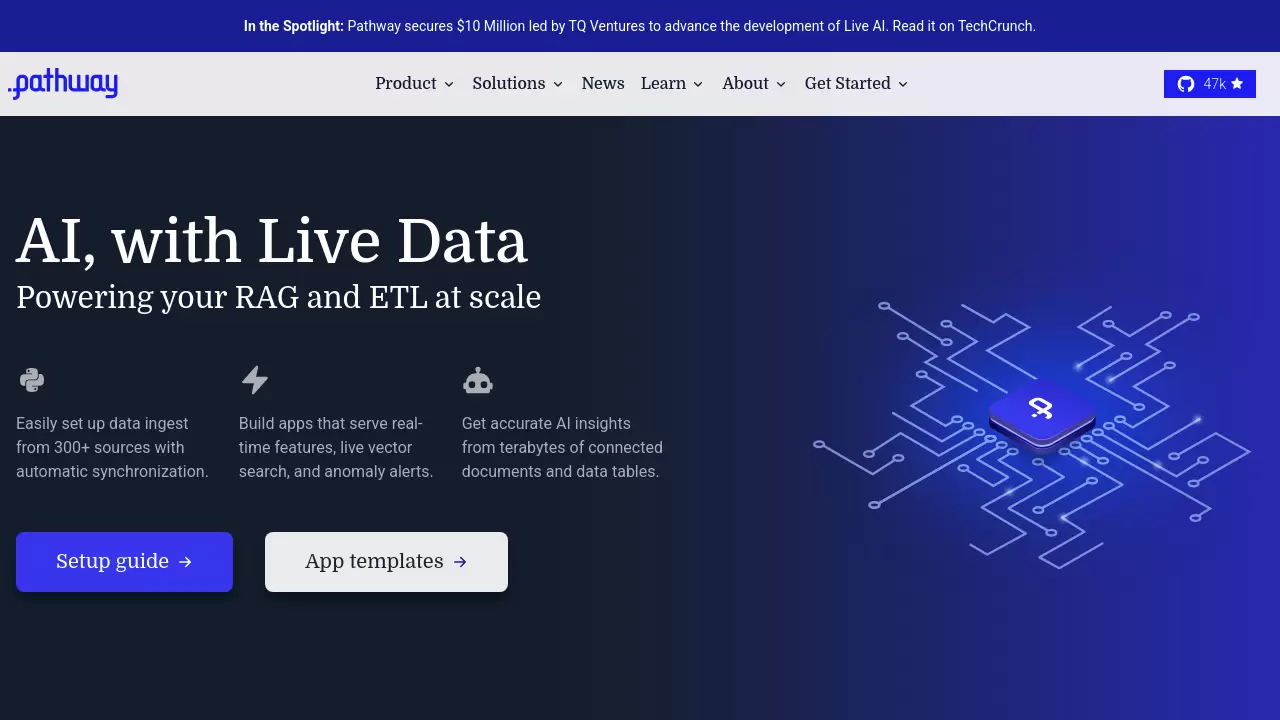Pathway
AI, with Live Data

Description
Pathway provides a robust data processing framework designed for developing and deploying AI and machine learning applications that operate on live data. It enables the creation of real-time pipelines capable of handling large-scale data processing tasks, such as Extract, Transform, Load (ETL) operations and Retrieval-Augmented Generation (RAG) systems. The platform facilitates easy data ingestion from over 300 sources with automatic synchronization, allowing applications to serve real-time features, perform live vector searches, and trigger anomaly alerts based on current data.
Built to manage terabytes of connected documents and data tables, Pathway ensures accurate AI insights derived from up-to-date information. It offers both Python and SQL programming APIs, running on a unified engine optimized for both streaming and batch workloads. This ensures code logic remains consistent whether processing live streams or backfilling historical data. Pathway supports self-hosting and deployment on major cloud providers, catering to various infrastructure needs from small projects to large enterprise solutions.
Key Features
- Live Data Processing: Build AI apps using real-time data streams.
- Scalable RAG & ETL: Power Retrieval-Augmented Generation and ETL pipelines at scale.
- Extensive Data Ingestion: Connect to 300+ data sources with automatic synchronization.
- Real-time Features & Search: Serve live features, perform vector searches, and detect anomalies.
- Unified Stream/Batch Engine: Use the same code logic for streaming and batch processing.
- Python & SQL APIs: Develop using familiar programming interfaces.
- AI Toolkits: Includes LLM extensions, unstructured data tools, and advanced indexing (Vector, BM25).
- Flexible Deployment: Self-host or deploy on AWS, Azure, and GCP.
- Monitoring & Debugging: Integrated monitoring (OpenTelemetry, Grafana) and debugging tools.
Use Cases
- Building real-time AI applications
- Powering Retrieval-Augmented Generation (RAG) systems
- Performing large-scale ETL operations
- Developing real-time dashboards and monitoring systems
- Implementing live vector search for documents or data
- Detecting anomalies in streaming data
- Analyzing social media sentiment in real-time
- Processing and analyzing real-time GPS/IoT data
- Building fraud detection systems
You Might Also Like
Bitwarsoft
PaidYour Digital Warrior for User-Friendly Software Solutions.
EaseMate AI ChatPDF
FreemiumChat with PDF, Summarize PDF Free with AI
Sesame AI
FreemiumNext Generation Voice Synthesis Technology
Stable Audio Open
FreeOpen source text-to-audio generation for short audio samples.
ElectroNeek
Contact for PricingSmarter Automation, Powered by AI Agents.